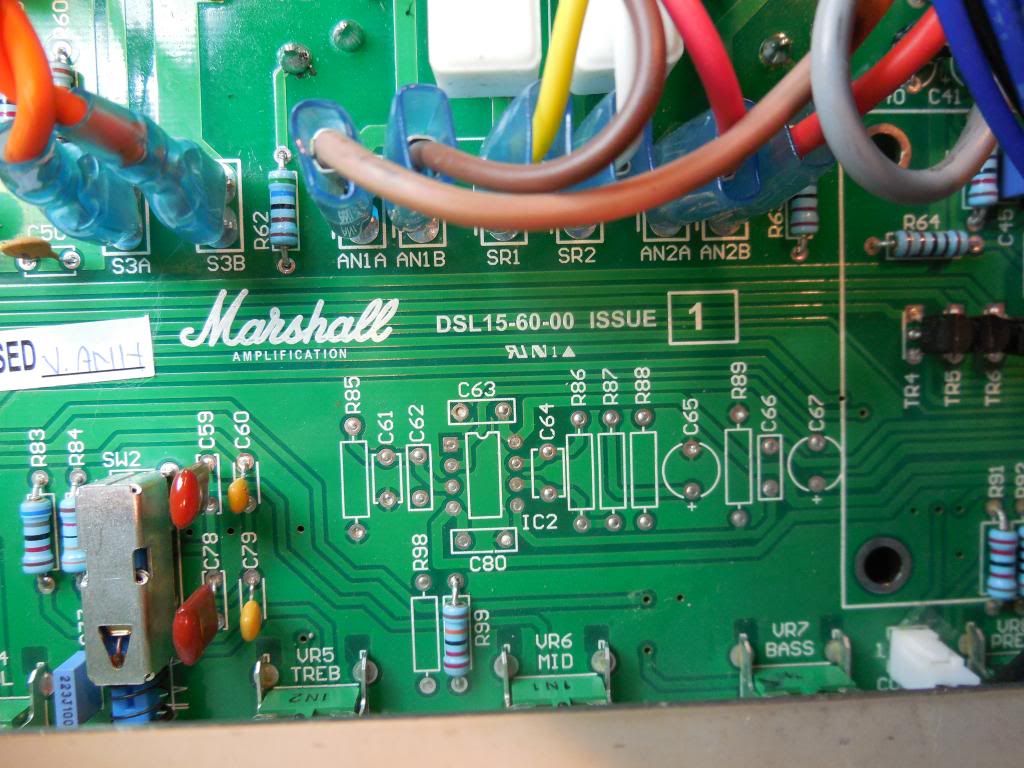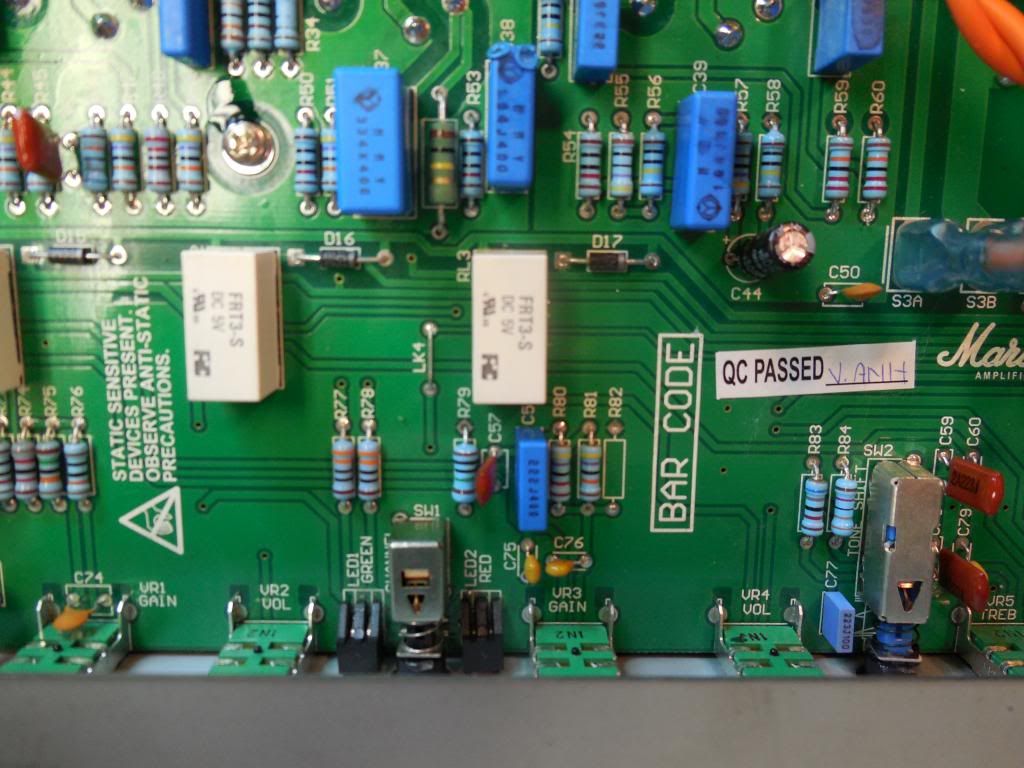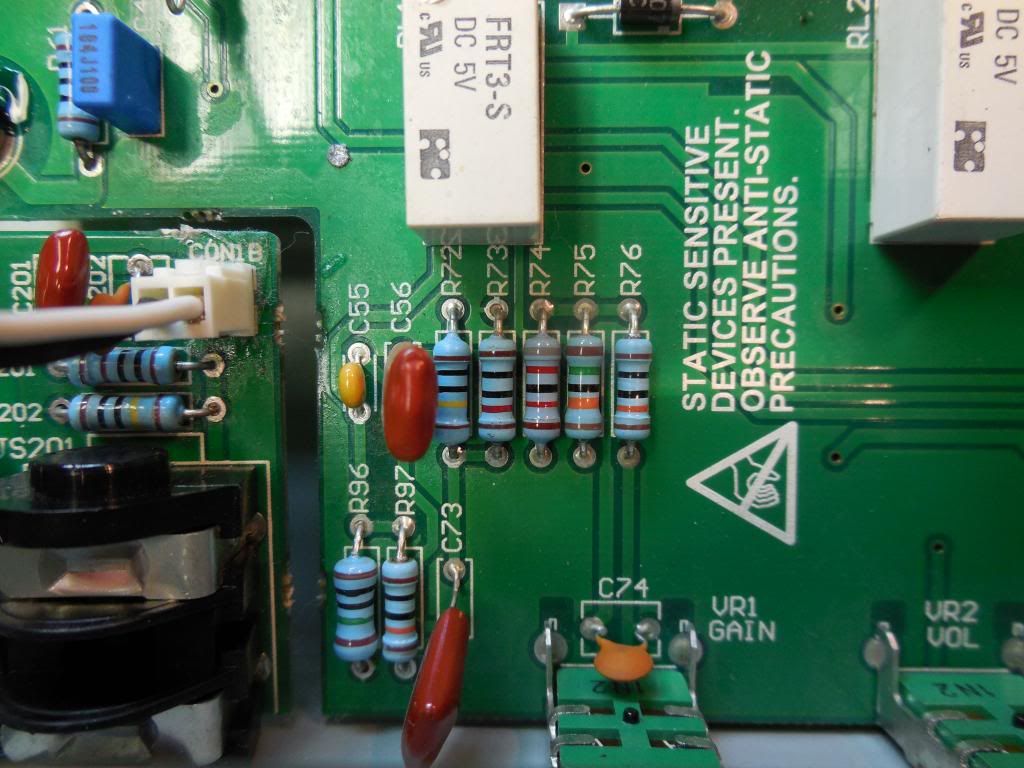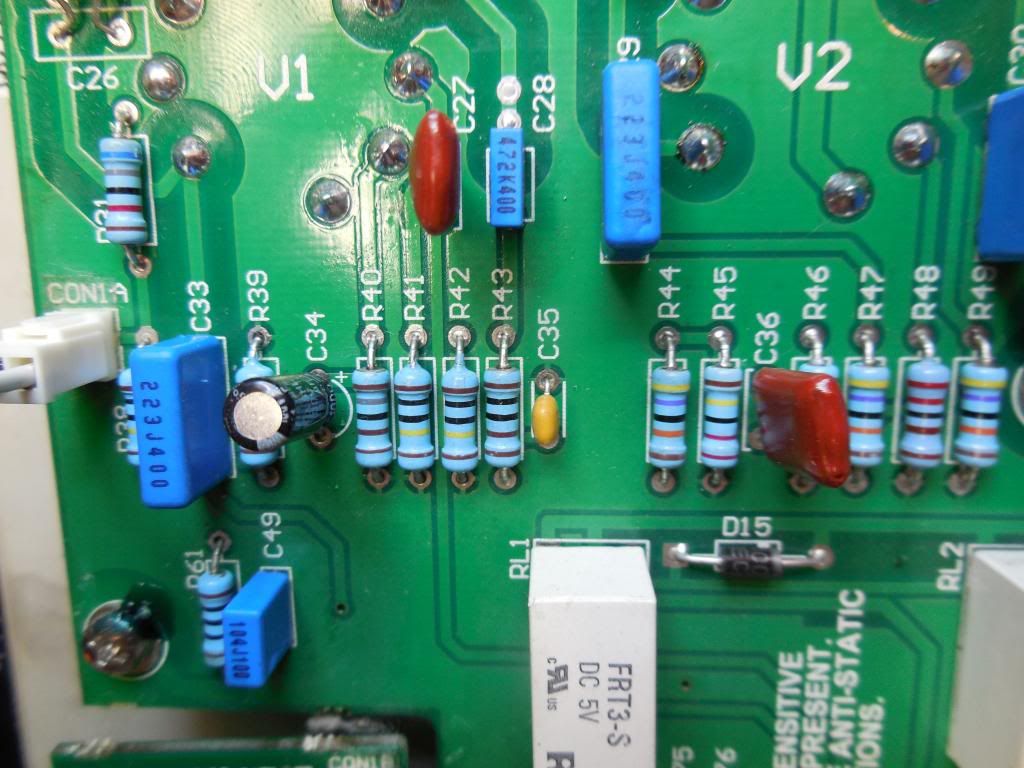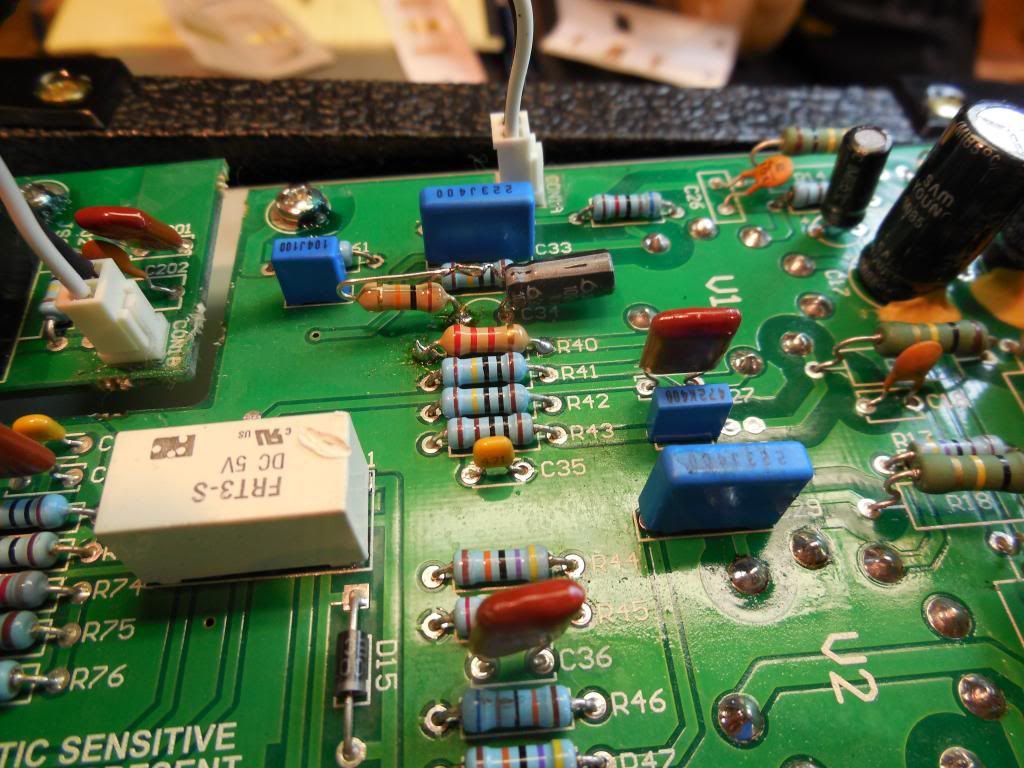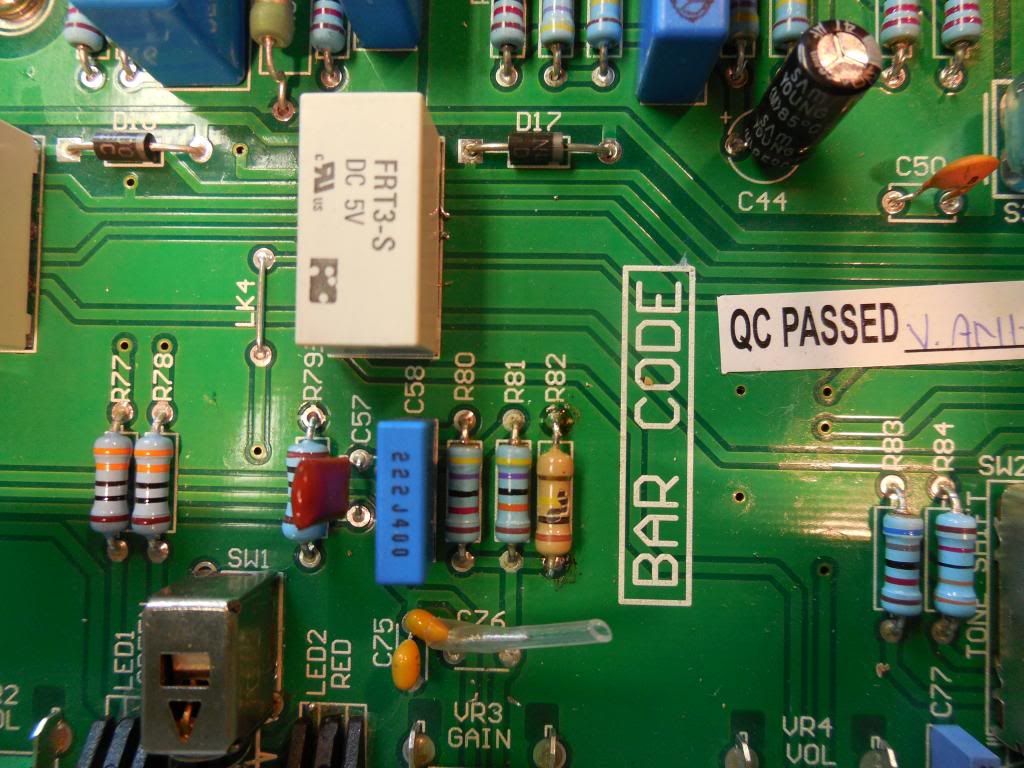cybermgk
Active Member
Yes.
Was trying to get my head around WHAT the changes did. Did a LOT of reading. I am somewhat new to this, so I may have some of this wrong. But,.....
Originally, just clipping out C34 and keeping V1B at 1.8, would have unbypassed the cathode resistor and thus substantially reduced the gain on the V1B gain stage (which I believe is red Ch's first stage). But that would have introduced cathode current feedback (which reduced the gain), but also would give a more smoother and compressed tone. By not just partially bypassing (with a knee freq right around a low E string) also reduced the harder clipping, for a less aggressive tone.
Changing V1B resistor to 2.7K, with C34 still clipped, would have reduced the gain further on the stage, by adding more of that neg feedback.
Not sure how that affected things down the line.
Adding C34 back with a 10K in series, partially bypassed the cathode resistor again. BUT, it now lessened the boost above the knee freq, keeping the gain reduced to similar levels to being unbypassed above for the max gain above the knee freq. SLightly higher gain for higher freq than ultra low.
I'm not sure, I'd want to raise the V1A cathode resistor.


